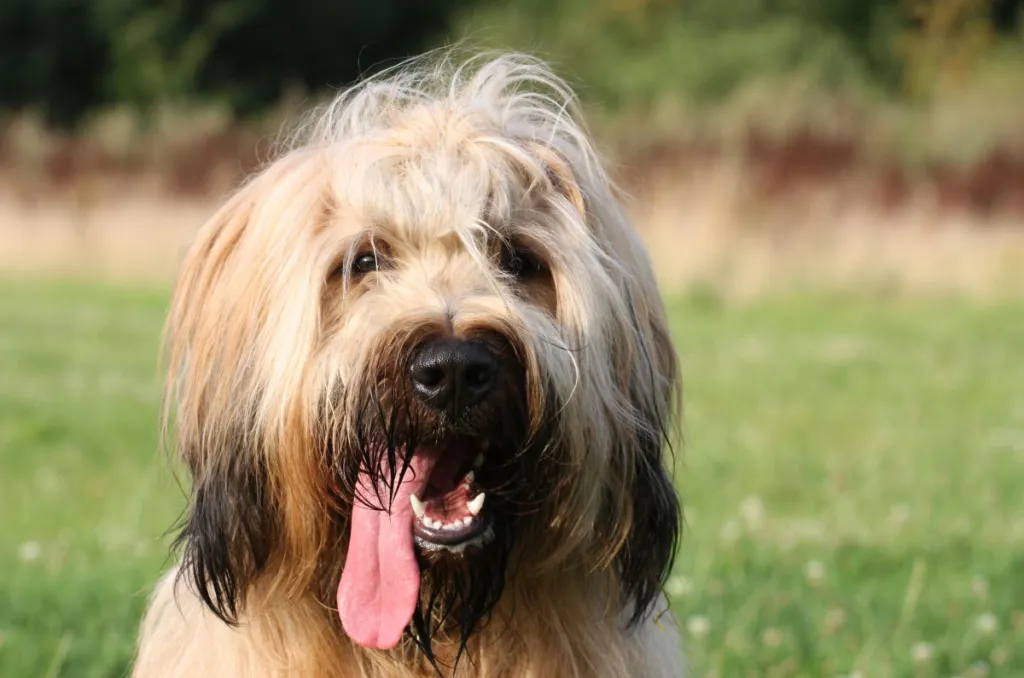Meet the Briard, a majestic and versatile herding dog with a rich history and a charming personality. From its origins in France to its role as a beloved family companion, the Briard has much to offer in terms of intelligence, loyalty, and distinctive appearance. Join us on a journey through the world of Briards, where tradition meets modern-day canine excellence.
History and Origins of the Briard
The Briard, also known as the Berger de Brie, hails from the Brie region of France, where it was bred for herding and guarding livestock. With roots dating back to the 8th century, this breed has been a loyal companion to French shepherds and farmers for centuries. Today, it remains a symbol of French pride and devotion.
Physical Characteristics of the Briard
Standing proud at 22 to 27 inches at the shoulder and weighing between 50 to 100 pounds, the Briard is a large and muscular dog with a distinctive double coat. Their outer coat is coarse and dense, while the undercoat is soft and insulating. Briards come in various colors, including solid black, fawn, and shades of gray, often with a touch of white on the chest.
Temperament and Behavior Traits
Known for their intelligence and loyalty, Briards are gentle giants with a protective instinct towards their families. They are renowned for their versatility, excelling not only in herding but also in roles as search and rescue dogs, therapy companions, and agility competitors. Early socialization and positive reinforcement training are key to nurturing their loving and obedient nature.
Training and Intelligence
Briards are highly intelligent and eager to please, making them responsive to training sessions that challenge their minds and bodies. They thrive on mental stimulation and enjoy tasks that involve problem-solving and learning new skills. Positive reinforcement methods, such as praise and treats, work effectively to motivate Briards during training sessions.
Health Considerations for Briards
Like all breeds, Briards are prone to certain health conditions, including hip dysplasia, progressive retinal atrophy (PRA), and bloat. Responsible breeding practices and regular veterinary check-ups are essential to monitor and maintain their health. Their double coat requires regular grooming to prevent matting and maintain overall skin health.
Diet and Nutrition Needs
Feeding a balanced diet suitable for the Briard’s size, age, and activity level is crucial to their overall health and well-being. Consultation with a veterinarian can help determine the best nutrition plan, ensuring they receive adequate nutrients to support their active lifestyle and maintain a healthy weight.
Living with a Briard
Living with a Briard means embracing a devoted companion who thrives on being part of family activities. They require regular exercise to keep them physically and mentally stimulated, whether through daily walks, playtime in the yard, or engaging in canine sports. Their affectionate nature and protective instincts make them excellent watchdogs and loving family pets.
Famous Briards in History and Pop Culture
Throughout history and in modern pop culture, Briards have made their mark as loyal and capable companions. From serving in the French military during World War I to appearing in films and television shows, their intelligence and versatility continue to captivate audiences worldwide.
Conclusion
In conclusion, the Briard is a remarkable breed cherished for its intelligence, loyalty, and striking appearance. Whether as a working dog on the farm or a cherished member of the family, Briards bring joy and companionship wherever they go, embodying the best of French canine tradition and modern-day excellence.
What kind of coat does a Briard have?
The Briard has a double coat that is coarse and dense on the outer layer, with a soft and insulating undercoat. Their coat is known for its protective and weather-resistant qualities.
How much exercise does a Briard need?
Briards are energetic dogs that require regular exercise to keep them healthy and happy. They benefit from daily walks, playtime, and activities that stimulate their minds and bodies.
What is good about a Briard?
Briards are known for their intelligence, loyalty, and versatility. They make excellent companions for active families and excel in various roles, from herding to search and rescue.
Are Briards good with other dogs?
Briards can get along well with other dogs, especially when properly socialized from a young age. They may exhibit herding instincts, but with proper training, they can be friendly and sociable with other pets.
Are Briards good watchdogs?
Yes, Briards are excellent watchdogs due to their protective nature and alertness. They are known to be vigilant and will alert their owners to any potential threats or strangers approaching.
What are some interesting facts about Briard dogs?
Briards have a long history of serving as herding and guarding dogs in France. They were favored by Napoleon and were used as messenger dogs during World War I. They are also known for their distinctive, bushy eyebrows and beard.
How much does a Briard eat?
The amount of food a Briard eats depends on factors such as age, size, activity level, and metabolism. Typically, they require a moderate amount of high-quality dog food to meet their nutritional needs.
How much do Briard dogs shed?
Briards are moderate shedders. Their double coat sheds seasonally, with regular grooming helping to manage shedding and keep their coat healthy.
How often should a Briard be groomed?
Briards should be groomed regularly to maintain their coat’s health and appearance. This includes brushing several times a week to prevent matting, along with occasional baths and regular nail trimming.
How big does a Briard dog get?
Briards are large dogs, standing between 22 to 27 inches tall at the shoulder and weighing between 50 to 100 pounds, depending on gender and individual genetics.
- Best Dun & Bradstreet (DNB) Alternatives for 2025 - April 19, 2025
- Best 6sense Alternatives for 2025 - April 18, 2025
- Best Instantly.ai Alternatives for 2025 - April 18, 2025



